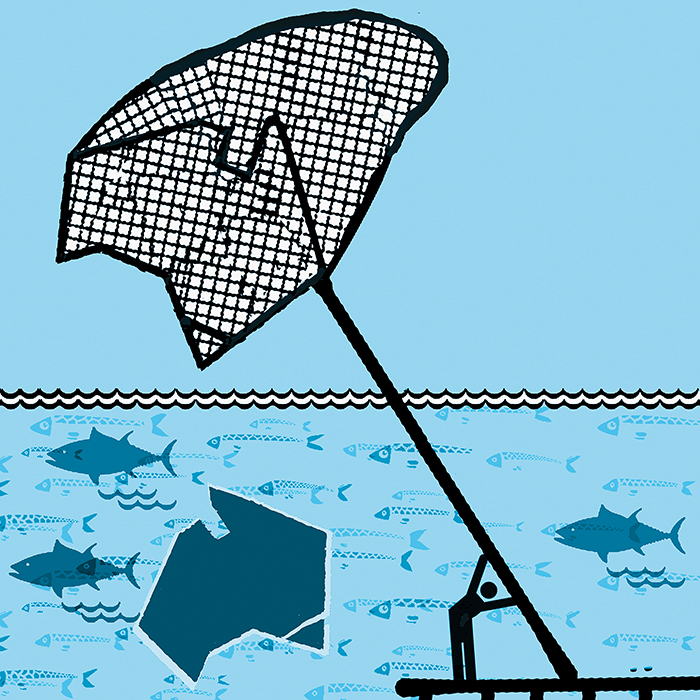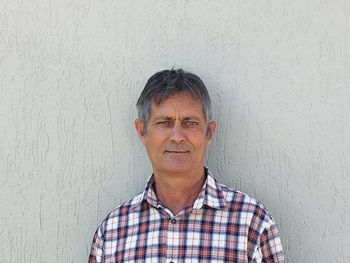A new office and new industry services are part of the FRDC’s changes designed to deliver on national priorities for the seafood sector

By Ilaria Catizone
Twenty-five years after it began, 2016 brings a substantial change and evolution in the way the FRDC operates. The changes to the FRDC have been occurring for many years, initiated with the development of the National Fisheries and Aquaculture Strategy and the Productivity Commission report into the Rural Research and Development Corporations (RDCs).
This led to profound changes in the activities the FRDC could undertake – allowing the FRDC to work directly on research and extension projects as well as undertaking marketing activities. Planning the implementation of the changes has been ongoing over the past two years and takes into account two internal reviews of the organisation’s structure, a ministerial request to relocate and consultation with stakeholders about what activities and services the FRDC will undertake.
The FRDC Research, Development and Extension (RD&E) Plan 2015–20 launched in September 2015 (see FISH issue December 2015, page 14) articulates and reinforces the direction in which the FRDC is heading and outlines clear delivery targets against three strategic priorities.
Adelaide office
To ensure the FRDC delivers on these priorities, changes are being made to the structure and staffing of the organisation. At its November 2015 meeting, the FRDC Board agreed to establish a regional office in Adelaide, co-locating with Wine Australia and the Grains Research and Development Corporation.
The office will house four to six staff who will focus on the planning and extension of RD&E with end users via the regional Research Advisory Committees (RACs) – formerly Fisheries Research Advisory Bodies (FRABs).
The FRDC chair, the Hon. Harry Woods, outlined the decision: “As a small agency that is co-funded by both the government and fishing and aquaculture, it is important we remain as connected as possible, and establishing an office closer to our stakeholders is the first step. The long-term strategic vision for the FRDC is to deliver against national issues while still ensuring that regional priorities are identified and addressed.”
In the long term, the FRDC may consider setting up offices in other locations in addition to working with similar primary industry organisations, such as other RDCs, the Regional Australia Institute or the National Farmers’ Federation, to develop and co-locate in a “rural hub” in Canberra. This would allow for the sharing of services and accommodation and reduce overall costs.
Assistant Minister for Agriculture and Water Resources Senator Anne Ruston has welcomed the FRDC’s decision to open a regional office in Adelaide. She says this is a positive move, relocating agencies with a strong rural focus closer to the industries that they serve.
“Setting up a regional office in Adelaide will allow the FRDC closer and better access to the geographical spread of its industry stakeholders and improve engagement,” Senator Anne Ruston says.
The move also sends a clear message that the FRDC will work closely with fishing and aquaculture regions across Australia.
Working with Wine Australia offers a range of collaborative opportunities, especially in export markets. Seafood and wine work well together and linking them to showcase Australia’s premium seafood and wine status benefits everyone.
Research Advisory Committees
In October 2014 the FRDC commissioned a review of the FRABs to identify better practice and better outcomes from stakeholder consultation, and to identify how to improve the efficiency and effectiveness of the FRAB network.
Based on this review and consultations with stakeholders, the FRDC Board decided that the FRDC would take over the management and running of the FRABs – now RACs – to achieve more direct regional engagement and visibility.
The new arrangements are intended to give the RACs greater autonomy and flexibility as well as addressing accountability gaps. Three new staff members will be employed and will oversee the eight RACs. The objective is to deliver improved regional engagement and delivery of services including extension and commercialisation of R&D across the country.
Services
The FRDC has always taken a pragmatic approach to the delivery of services and with the changes to the Primary Industries Research and Development Act 1989, some key activities are now being considered for direct delivery from inside the organisation. The overall objective remains to improve the service for stakeholders and ensure the FRDC achieve its outcomes.
Marketing is a good example. In looking to develop marketing capacity, the FRDC took a very long-term view, and has made it a priority to listen to what industry wants from the FRDC before jumping in. A year of consultation and discussions has led to the development of a national framework for seafood marketing (see FISH issue December 2015, page 12). Over the coming 12 months, the FRDC will start to deliver marketing services for those industry sectors that ask.
Status of Australian Fish Stocks
Another service to be undertaken internally will be the management and development of the Status of Australian Fish Stocks reports (SAFS). The reports bring together available biological, catch and effort information to determine the status of Australia’s wild-catch fish stocks against a nationally agreed reporting framework, and provide a resource to inform the general public, policymakers and industry on the sustainability of stocks.
In 2015 the FRDC changed how SAFS would be managed into the future, internalising this function within the corporation. The FRDC’s Carolyn Stewardson has taken on the role of managing the day-to-day operations and is now the first point of contact for SAFS at the FRDC. She will work with agencies from across Australia to increase the coverage of the 2016 report to include almost 80 species, a major improvement from the 68 in the 2014 reports.
This will see the coverage of the reports increase to more than 90 per cent of the annual catch and value of Australian wild-capture fisheries.
Governance of SAFS is overseen by a SAFS Advisory Group comprising members from each jurisdiction, and is supported by the Australian Fisheries Management Forum.
Under the new management structure, the advisory group held its first meeting to progress 2016 reports by teleconference in December 2015. The FRDC held face-to-face visits with individual jurisdictions throughout February 2016 to discuss the reporting process, timelines for reporting requirements, roles and responsibilities of authors and technical queries.
The FRDC is continuing to extend information on SAFS to the general public through its social media platforms (FRDC and Fishfiles Facebook and Twitter accounts) and a partnership with Andrew Ettingshausen, which will showcase a short segment on a species in each episode of his Channel 10 TV show Escape with ET.
Adelaide office open
 Wayne Hutchinson
Wayne Hutchinson Wayne Hutchinson is the first staff member to join the FRDC’s Adelaide office, where he will work as project manager – research. He will also take on the role of research, development and extension manager for Oysters Australia, taking over from Rachel King. He started on 1 February 2016 and brings an extensive background in aquaculture to the team. He holds a Master of Applied Science in Aquaculture (Research) from the University of Tasmania.
Since 1994 he has been expanding research and technical skills relevant to the development of new species for marine finfish aquaculture. R&D projects he has managed have been instrumental in the establishment of the growing marine finfish aquaculture sector in South Australia.
His research has primarily addressed hatchery-related issues ranging from egg supply through to fingerling production of a range of local marine finfish species including snapper, King George Whiting, Yellowtail Kingfish, Mulloway and Southern Bluefin Tuna.
In his most recent role at the South Australian Research and Development Institute’s Aquatic Science division, Wayne Hutchinson was subprogram leader, propagation and systems, for the aquaculture program. He also conducted and managed the Australian Seafood Cooperative Research Centre R&D projects on Yellowtail Kingfish and Southern Bluefin Tuna in collaboration with industry.
As part of this role, he provided technical advice to industry on issues relating to captive spawning of Southern Bluefin Tuna.





